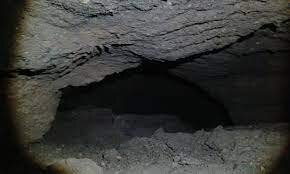Prehistorical rock shelter discovered in northern Iran

TEHRAN – Cultural heritage personnel in northern Iran have found a cave believed to have been used by local shepherds from prehistorical times.
The cave, which measures roughly 15 meters in length, and 12 meters in width with a height of about eight meters, is situated near the city of Rudsar in Gilan province, the provincial tourism chief said on Tuesday.
Based on available evidence, the cave, which overlooks a village, has been a shelter for the herdsmen of this region for thousands of years, Vali Jahani said.
Based on our studies and investigations, the history of human presence in the cave goes down in time to prehistorical times, the official said.
Jahani said an accurate date and age of the cave would be announced later following archaeological excavations.
“So far, nearly 115 caves have been identified in Gilan, 15 of which are favored by domestic and foreign tourists….”
He said: "Among the highlights is Darband Cave, which contains evidence of the earliest prehistoric human cave occupation during the Lower Paleolithic in Iran."
The lush green province, bounded by the Caspian Sea and Alborz mountains, registered seven million visits to its attractions in the first five months of the current Iranian calendar year (started on March 21).
Sophisticated Rasht, the capital of Gilan province, has long been a weekend escape for residents of Tehran who are looking to sample the famous local cuisine and hoping for some pluvial action—it's the largest, and wettest town in the northern region. Gilan is divided into coastal plains, including the large delta of Sefid Rud and adjacent parts of the Alborz mountain range.
The historical Gilan region was within the sphere of influence of the successive Achaemenian, Seleucid, Parthian, and Sasanian empires that ruled Iran until the 7th century CE. The subsequent Arab conquest of Iran led to the rise of many local dynasties, and Gilan acquired an independent status that continued until 1567.
AFM
